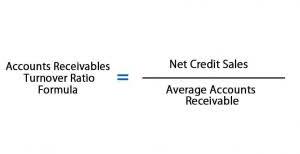
There are two ways of preparing P&L single step and multi step income statement. Single step gives you the revenue, expenses and the profit or loss of the business while Multi step breaks down operating revenues and operating expenses versus non-operating revenues and non-operating expenses. The income statement, also known as the P&L (profit and loss) statement, is one of the crucial financial statements businesses use to evaluate their financial performance. When comparing it to the balance sheet, it’s essential to understand the differences and connections between them. A comprehensive analysis of an income statement involves understanding the income statement structure, breaking down expenses, analyzing revenue streams, and evaluating the enterprise’s profitability. Additionally, you will need to comprehend tax obligations, the role of depreciation and amortization, and how to decipher key income statement metrics.
COGS (Cost of Goods Sold, aka Cost of Sales)
- These take minimal time to prepare and don't differentiate operating versus non-operating costs.
- Subtract the selling and administrative expenses total from the gross margin.
- It presents revenue, expenses and ultimately, profit or loss in a straightforward way that involves a single calculation.
- Non-operating revenues are revenues that a company earns from activities that are not related to its primary business operations.
The single-step income statement lumps together all of XYZ Corporation’s revenues and gains and these amounted to $94,000. A single-step income statement is useful when your business does not have complex operations or only needs a simple statement that could report the net income of a business. Many small businesses need financial statements to apply for credit or to provide financial information to a potential lender. Using an income statement to demonstrate a consistent history of income and profitability can make this process easier.
Income Statement Analysis
- Your net profit margin is the number you’ll continue to focus on as your read and analyze each income statement your company produces.
- It’s the amount you take home before taking into account other, indirect expenses.
- It helps managers and business owners point out which company expenses are growing at an unexpected rate and which of these expenses need to be cut down in the future.
- Single-step income statements include revenue, gains, expenses, and losses, and they strictly show operating costs.
- 11 Financial may only transact business in those states in which it is registered, or qualifies for an exemption or exclusion from registration requirements.
Given the nature of their operations, such entities have a complex list of activities and costs to account for. Once you take your total revenue and subtract your COGS, you get your gross profit. It’s the amount you take home before taking into account other, indirect expenses.

Understanding Income Statements
- All of our content is based on objective analysis, and the opinions are our own.
- Lenders and investors look at your profit margins to see how profitable your company is, and decide whether to give you money.
- Income taxes are taxes imposed by governments on income generated by individuals and businesses within their jurisdiction.
- Another important aspect of evaluating profitability is comparing operating income with net income.
- Jason Ding is a seasoned accountant with over 15 years of progressive experience in senior finance and accounting across multiple industries.
- Income statements also provide a good source of analysis for investors that are willing to invest in the business.
- Comparing these figures over time will reveal any growth or decline in the company’s revenue-generating ability.
A balance sheet shows you how much you have (assets), how much you owe (liabilities), and how much is remains (equity). It’s a snapshot of your whole business as it stands at a specific point in time. Common size income statements make it easier to compare trends and changes in your business. Here’s how to put one together, how to read one, and why income statements are so important to running your business. Your net profit margin is the number you’ll continue to focus on as your read and analyze each income statement your company produces.
Finally, the income tax line item reports your estimated income tax for the year. Good accounting can reduce your tax burden, but there are only so many deductible expenses you can report. For that reason, this is the last place you turn when you’re trying to increase your net income. In their eyes, money you save with the help of an accountant—by reducing your tax burden, or helping you pay lower interest on debt—is separate from money you save by operating your business day-to-day. Any money saved in that way will impact your income tax and interest payments—neither of which are included when calculating operating income. So if you spend a large amount of money on an essential piece of equipment, and you’re depreciating part of its value every accounting period, it will increase your COGS.
A negative net income means a company has a loss over that given account period, not a profit. While your business may have positive sales, you’ll end up with a negative which accounts are found on an income statement? net income if expenses and other costs exceed that amount. To create an income statement for your business, you’ll need to print out a standard trial balance report.
What financial insights can be gleaned from comparing consecutive income statements?
The income statement is an integral part of the company performance reports. While the balance sheet provides a snapshot of a company’s financials as of a particular date, the income statement reports income through a specific period, usually a quarter or a year. Each expense line should be double-checked to make sure you have the correct figures. Enter the total amount into the statement as the selling and administrative operating expenses line item. Your cost of goods sold includes the direct labor, materials, and overhead operating expenses you’ve incurred to provide your goods or services.

If you don’t have a background in finance or accounting, it might seem difficult to understand the complex concepts inherent in financial documents. But taking the time to learn about financial statements, such as an income statement, can go far in helping you advance your career. As we saw, while a single-step income statement is straightforward and easy to understand, a multi-step could pose significant challenges, especially if you’re just starting out in accounting. By taking our course Fundamentals of Financial Reporting you’ll be ready to tackle these and most other accounting scenarios you’re likely to encounter in your practice.

Current Assets
Another important aspect of evaluating profitability is comparing operating income with net income. Operating income, also known as operating profit or operating earnings, represents the income generated from the regular business operations, excluding any non-operating income or expenses. Operating income is the result of subtracting the company’s operating expenses from its operating revenues. This income statement shows that the company brought in a total of $4.358 billion through sales, and it cost approximately $2.738 billion to achieve those sales, for a gross profit of $1.619 billion. These “buckets” may be further divided into individual line items, depending on a company’s policy and the granularity of its income statement. For example, revenue is often split out by product line or company division, while expenses may be broken down into procurement costs, wages, rent, and interest paid on debt.
In most cases, your income statement will be divided into various sections, including Revenue, Operating Expenses and Taxes. Within each section, smaller subsections exist to provide more detailed information. The final line on the statement provides your net profit or loss, which is calculated as the difference between your revenue and all of the expenses paid to earn that revenue. In this section, we will discuss the importance of depreciation and amortization in an income statement and how they impact the financial health of a business. Both depreciation and amortization affect the value of a company’s assets, with depreciation relating to tangible assets and amortization focusing on intangible assets.






